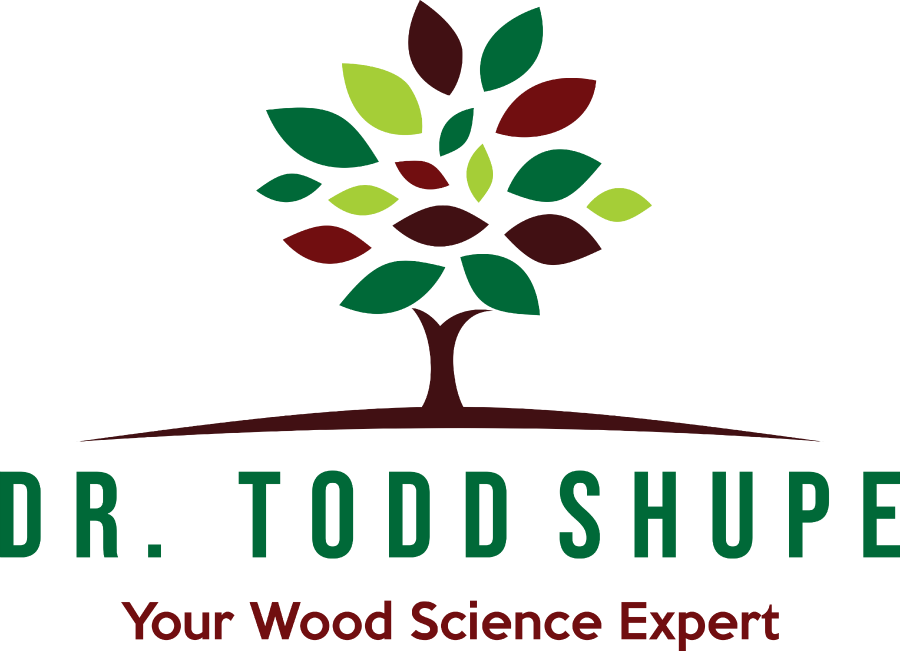Laminating Wood Fiber Mats Into A Densified Material With High Performance

Abstract
To develop high-performance wood materials, a novel preparation strategy is presented in this study. Wood fiber mats impregnated with phenolic resin, were laminated into a densified material. Wood lumens collapsed layer by layer during densification, leading to a compact multi-layered structure. The densified material had excellent mechanical properties and favorable water resistance. The flexural, compressive, and short-beam shearing strength were approximately 230%, 400%, and 260% higher than that of natural wood, respectively. The water absorption rate and thickness swelling rate in boiled water were 19% and 5.7%, respectively. Surface water repellency was also enhanced due to reduction of hydrophilic groups on the surface. Such high performance makes the material a promising candidate for advanced engineering structures and applications.
Advantages of wood
Wood possesses certain advantages such as high specific strength, good processability, and favorable aesthetics, and has been used for millennia as a structural material in the fields of
architecture and furniture [1]. However, mechanical performance, dimensional stability, and durability of natural wood, particularly many fast-growing species, cannot yet meet the need of advanced engineering structures and applications due to inherent heterogeneity (e.g., tissue cell types and anatomical variability) and natural defects (e.g. knots) [2]. A prominent approach to overcome the drawbacks is densification, by which high homogeneity and directionality of wood structure and thus excellent mechanical properties can be achieved [3].
Softening of wood
Softening of the wood is essential to facilitate the densification at low pressure. Heat and steam are the most frequently used methods but they are costly [4]. Another method is delignification,
by which complete densification can be achieved under low pressure [5]. However, this option requires waste disposal and has environmental problems [6]. Phenolic resin can prominently soften wood cell walls and decrease the Young’s modulus (MOE) of wood fibers [7]. It has been proven that phenolic resin impregnation is an environmentally friendly and effective method to enhance wood densification [8]. Moreover, the method is cost-efficient to improve the dimensional stability and resistance to biological attack of wood [9].
Permeability
To add more resin into wood lumens and cell walls, high permeability must be achieved. Directional splitting is a process to produce wood fiber mats for new-type scrimbers [10]. The mats exhibit a web-like structure comprising long and narrow fiber bundles, which can substantially improve liquid permeability. Furthermore, the fiber orientation and the natural appearance of the wood are not affected by the process.
Objective
In this study, fiber mats were prepared using fast-growing pine wood, impregnated with phenol formaldehyde resin, and laminated into a densified material. The structure, mechanical properties and water resistance of the densified material were investigated. The objective of this study was to develop a novel strategy for the preparation of high-performance wood material.
Conclusion
In this study, laminating wood fiber mats were used to prepare densified wood using fast-growing pine wood as raw material. The mats with a highly permeable fiber structure had high permeability which facilitated phenolic resin impregnation. The densified wood exhibited a compact multi-layered microstructure. Superior mechanical performance and favorable water resistance were achieved. These results suggest that this novel strategy can successfully fabricate high-performance wood materials using abundant and low-cost fast-growing wood
For more information, please read Laminating Wood Fiber Mats Into A Densified Material With High Performance
Todd Shupe is the President of Wood Science Consulting, LLC. He is a a well-recognized expert on wood preservation, insects and fungi, wood decay and degradation, and wood species identification. He has a broad background in new product development, quality management, and marketing and sales in both the public and private sectors. For more information please visit DrToddShupe.com.

